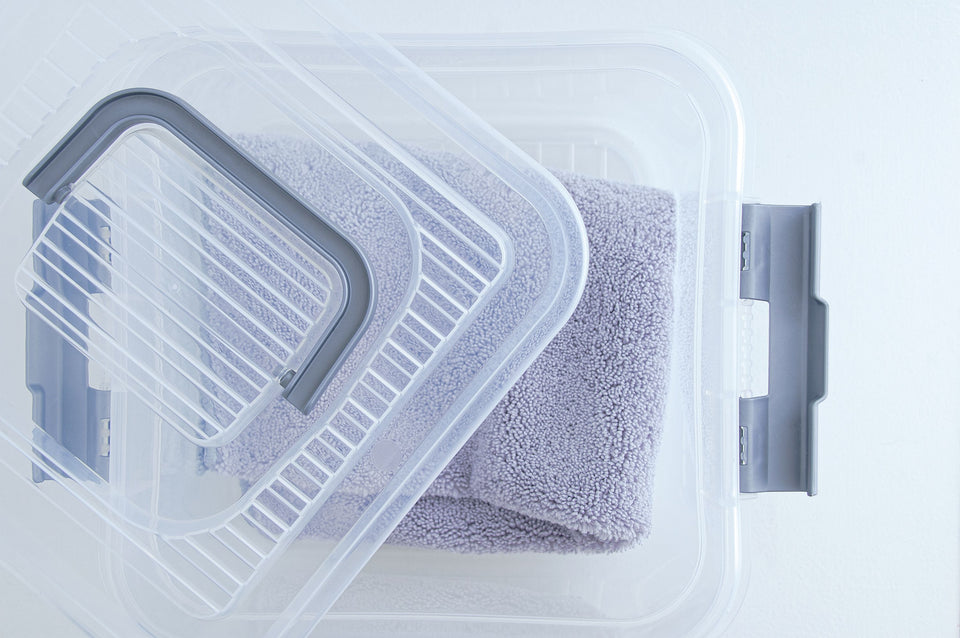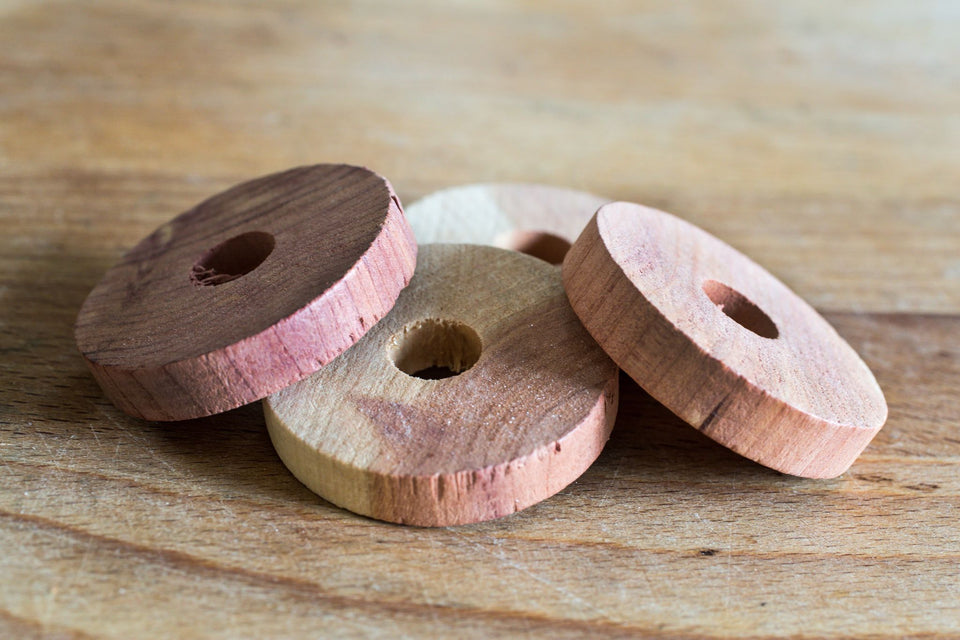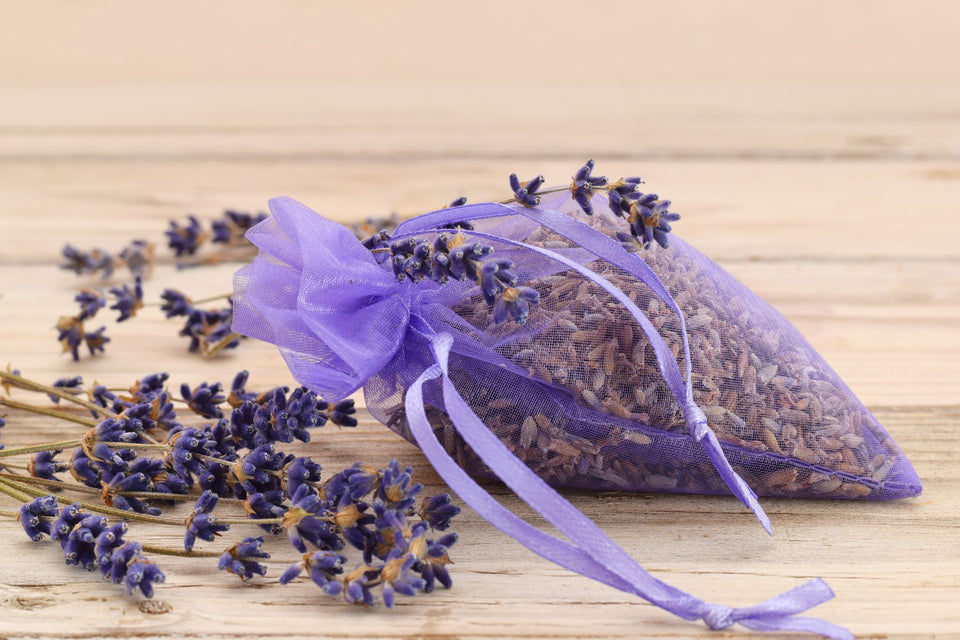Mothball Alternatives: Getting Rid of Moths Without Mothballs

Whenever you opt to switch out clothing for one season to the next, you end up putting vast amounts of fabrics into the closet - and everyone knows there’s never enough closet space! You aim to keep your clothing fresh and in one piece until the season calls once again. Being someone who takes great care of their clothes, you know that warding off those pesky moths whilst your clothes are in seasonal storage is essential. You turn to search for mothballs to help prevent your clothing from becoming a moth-ridden mess! In your search you find a mixture of what you know as moth balls, but also moth traps, cedar balls and more. Are these really all mothballs?! Or are these mothball alternatives you should consider for this season’s protection against clothes moths?
Mothballs might have been your grandmother’s go-to pesticide for moths, but they can cause severe damage to human and pet health, too. Made from either naphthalene or paradichlorobenzene, mothballs are poisonous when consumed, and they can also cause cancer.
In other words, no wonder there’s a world of alternatives to mothballs available today!
Not only are there substitutes for moth balls, but there are some actions you can take to achieve your goal of preserving your clothing.
A simple two-part recipe of “preparation” and “preservation” is what’s needed.
Always Wash Your Clothes Before Storing

The preparation part of the recipe begins with what may feel like a “washathon”. It’s time to put the washing machine to work.
Before you go putting your clothing into garment bags and storage bins, there is one crucial step to keeping moths away. You want to wash your clothing thoroughly and also ensure they are entirely dry before going into storage.
For more delicate items, go ahead and use a laundry mesh bag to protect your clothes during a rigorous wash.
Making sure your clothing goes into storage moth-free is priority number 1. Trying to fix the moth problem AFTER the moth larvae and moth eggs have been stored snuggly away with your beautiful cashmere isn’t the way to go.
Without thorough cleaning, you could be creating a moth sanctuary where moth larvae chew their way through garments for an entire season - completely unchecked!
Moths are attracted to more than just the wool fibers of your sweater. They also like certain scents, like soap, perfume, food, and sweat. Washing clothing can help remove any moth eggs on the clothing that haven’t hatched yet and the already active moth larvae.
If you’re interested in which of your clothing items are most at risk, you may care to read our article explaining what moths eat and why - forewarned is forearmed in the battle to keep your seasonal clothing in one piece!
Use Airtight Storage Containers

Sticking with part 1 of the recipe, selecting a moth-deterring storage solution is the next priority after a thorough wash.
The type of clothes storage you use will play a large part in how protected your clothing is during their sleepy off-season in the less frequented parts of your closet. One of the best preventative measures against moths is to use airtight storage. Store your bedding and seasonal clothing in containers that are bug-proof. You can use zip-up chemical-free garment bags for items that need airflow (such as heavy knits and heirloom items that need a touch of vintage care) while also keeping insects at bay.
Hard storage bins are also great, but before packing your clothing into a storage bin, make sure the storage bin itself is moth free.
You wouldn’t want to undo all of the work from the last 72 hours - let’s make this “washathon” worth it!
It may sound obvious, but try and avoid damp environments, even if the clothes storage you’re using is airtight. Moths LOVE moist and damp environments, so don’t invite them to test the “airtightness” of your storage containers. That’s not a game of roulette you want to be playing with your gorgeous merino wool throws.
Of course there are also clear vacuum storage bags which should be used with care and caution around delicate garments.
Non-Toxic Moth Traps
In part 2 of this moth-free clothing recipe, we start to look at items you might now start to recognise as substitute moth balls.
If you have experience with moths, you know you need something far more powerful than a bag of lavender to prevent a moth infestation. So for a true, modern and safe alternative to last generation’s toxic mothballs, you can turn to non-toxic clothes moth traps.
Clothes moth traps can be placed in your wardrobe to catch the adult moths before they have a chance to lay their eggs and certainly before their larvae have a chance to hatch as part of what can be a long life cycle.
Non-toxic clothes moth traps are an excellent modern alternative to old fashioned (outlawed!) mothballs, because they don’t contain hazardous fumes, are easy to use, and effectively trap adult moths on the sticky paper for easy clean up.
While other mothball alternatives on this list don’t necessarily kill moths, clothes moth traps can and will reduce the number of adult moths in your home - even before they’ve had a chance to mate and lay their eggs!
Of course if your sticky moth trap is continuously full of trapped moths, that’s a warning signal that you may already have a larger problem looming. Your seasonal storage preparation phase might not have been as thorough as you’d thought.
For information on eliminating larger infestations in your home, you may like to read our Clothes Moth Kit Guide, which gives you guidance about using chemical products in line with our Traps.
Cedar Balls or Blocks

You might equate cedar to “organic moth balls”. This connection is probably reinforced by the fact that a search for mothballs will often yield “cedar balls” designed to ward off the household clothes moth. The oil in cedar wood is a powerful repellent that will keep moths away from your clothing. The downside to cedar is that the oils and scent are short-lived. Any cedar blocks, hangers, balls, or chips that you purchase for your closet and wardrobe will have to be replaced every 2-3 months or so.
And remember - these scents are a deterrent, but they don’t actually catch or kill the clothes moth like you may assume. They also must be placed away from moth traps because they interfere with the trap pheromones.
Lavender

Another natural alternative to mothballs is lavender. The lovely fragrance will add a pleasant scent to your stored clothing. Plus, you get the benefits of lavender aromatherapy! Grab some dried lavender and hang it in your room. Alternatively, you can purchase sachets of lavender to line the shelves of your closet. Lavender oil is another easy to use alternative. Dab some of the oil on a cotton ball and set it near your clothing. Be careful not to let the oil touch the fabric, since it could stain.
Lavender, like Cedar oil, will fade and lose its potency over time. Also like Cedar oil, lavender is a repellent, not a moth killer!
Sachet of Cloves, Rosemary, and Thyme
Sticking with the homemade theme, this mothball alternative might sound more at home in the kitchen than the bedroom closet. Rest assured, this is a moth deterring concoction that’s used by many into their homemade solutions.
You simply make a sachet bag that delivers pleasant scents that also drive away moths. Once again, rosemary and thyme aren’t killer-herbs; their smells are simply something moths tend to avoid.
Find some dried cloves, thyme, and rosemary (or you can just use one of the three) and mix them into a sachet bag. The combination can be powerful enough to put moths off for about 6 months. Of course, after the smell starts to dissipate, you can refill the bag with a fresh collection of herbs.
Cloves alone have been known to have enough power to deter flying moths. You can take some tissue paper and wrap up cloves before placing them in the pocket of a wool coat or among folded shirts, for example.
Homemade Moth Repellent Spray
Alongside placing packets of lavender or rosemary all over the place, you can mix up a DIY spray. It’s easy to make and uses ingredients like neem oil, which is proven to repel and kill many species of moths, including clothes moths.
Home remedies are great, but they come with the risk that they’re ineffective as mixtures are inevitably varied. Recipes for homemade moth sprays you’ll find online will vary greatly and no-one can truly say that their DIY spray was the one that worked (or the reason why they deterred the clothes moths for that matter).
For a basic recipe of homemade moth spray you'll need a 2-quart spray bottle. Pour in ¼ cup of neem oil. Fill the remaining space with water and add some liquid soap.
You can also use white vinegar and water or a mixture of vinegar, neem oil, and vinegar to make a moth-killing spray. However, be careful on what kind of materials you spray the solution, since vinegar could potentially stain leather, suede, and silk.
Which Natural Alternative To Mothballs Is Right For You?
Regardless of the deterrent used, we can all agree that some good preparation practices before storing your clothing will do a lot of the heavy lifting when it comes to preserving your precious clothing items.
When it comes to the battle to keep those freshly scented sweaters clear of moth eggs and larvae, you have 2 schools of thought;
- Try and repel flying moths leaving them unharmed but away from your clothes storage
- Catch and kill the clothes moths and take them out of the breeding cycle for good!
Mothballs, at least the old fashioned naphthalene ones, were designed to deter and kill using their toxic fumes. Killing the flying clothes moths is the ideal outcome if you truly want to protect all of your clothing. After all, you don’t want to simply deter the moths from your clothes in seasonal storage only to find them at home in your day-to-day dress wear.
Catching and killing is therefore a more robust, odour free and completely non-toxic way of naturally protecting your clothes from those textile hungry clothes moths - with expensive tastes in knitwear nonetheless!
Take a look at our non-toxic Clothes Moth Traps which are protecting wardrobes and closets across the globe as we speak.
The only question remaining is, who loves your cosy cashmere more? The pesky clothes moth, or you?

About MothPrevention
MothPrevention® speak to customers every day about their clothes moth issues - clothes moths are a species that are ever increasing and that can cause significant damage to clothes, carpets and other home textiles.
To date, we’ve helped over 250,000 customers deal with their moth problems. We have developed professional grade solutions including proprietary pheromones and trap design, not available from anybody else in the USA.





